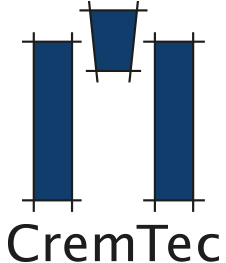Saving the Environment – CremTec Takes on Responsibility
Earth to earth – the earth is our origin and we return to it. Cremation also means respecting nature. Compared to coffin burials, cremations are a much cleaner method of interment. Meanwhile CremTec continues to look for ways to make all aspects of cremation even more environmentally friendly.
MERCURY EMISSIONS
Crematoria emit mercury emissions due to the burning of dental amalgam. Compared to power plants (4,000 kg per year) and waste incineration (210 kg per year), however, the emissions from cremation are negligible.
CremTec’s investigations show that the plants filter out most of the mercury. A total of around 160 crematoria in Germany emit around 6 kilograms per year. The fact that no mercury could be found in the soils near crematoria, support such assumptions. Nevertheless CremTec strives to further reduce emissions by using the latest technology.
Download of our study about emissions of mercury and dental amalgam by crematoria (PDF)
PARTICULATE MATTER + CO2
Compared to vehicles and wood combustion plants registered in Germany, emissions produced by crematoria are insignificant. The latest figures by the Umweltbundesamt, Germany’s main environmental protection agency, support that assumption. CremTec invests in renewable energy including solar power plants to further reduce its CO2 footprint.
ENERGY
At “Die Feuerbestattungen”, an alliance of a current total of 15 crematoria, we have reduced our energy use per cremation by 26.5 percent over the last decade. CremTec was involved in the planning of all member facilities and we see the potential for further energy savings.

RAL QUALITY MARK
To enhance the standards of German crematoria, CremTec helped to draw up the criteria of the RAL Gütegemeinschaft Feuerbestattungsanlagen, a unit of the German RAL Institute for Quality Assurance and Certification. All facilities built or modernised by CremTec meet the constructional, technical and organisational requirements set by the quality and test specifications GZ 906 of the RAL. That means emissions produced by these crematoria remain well below statutory limits, while the sites exceed legal requirements in terms of hygiene and staff qualification.




